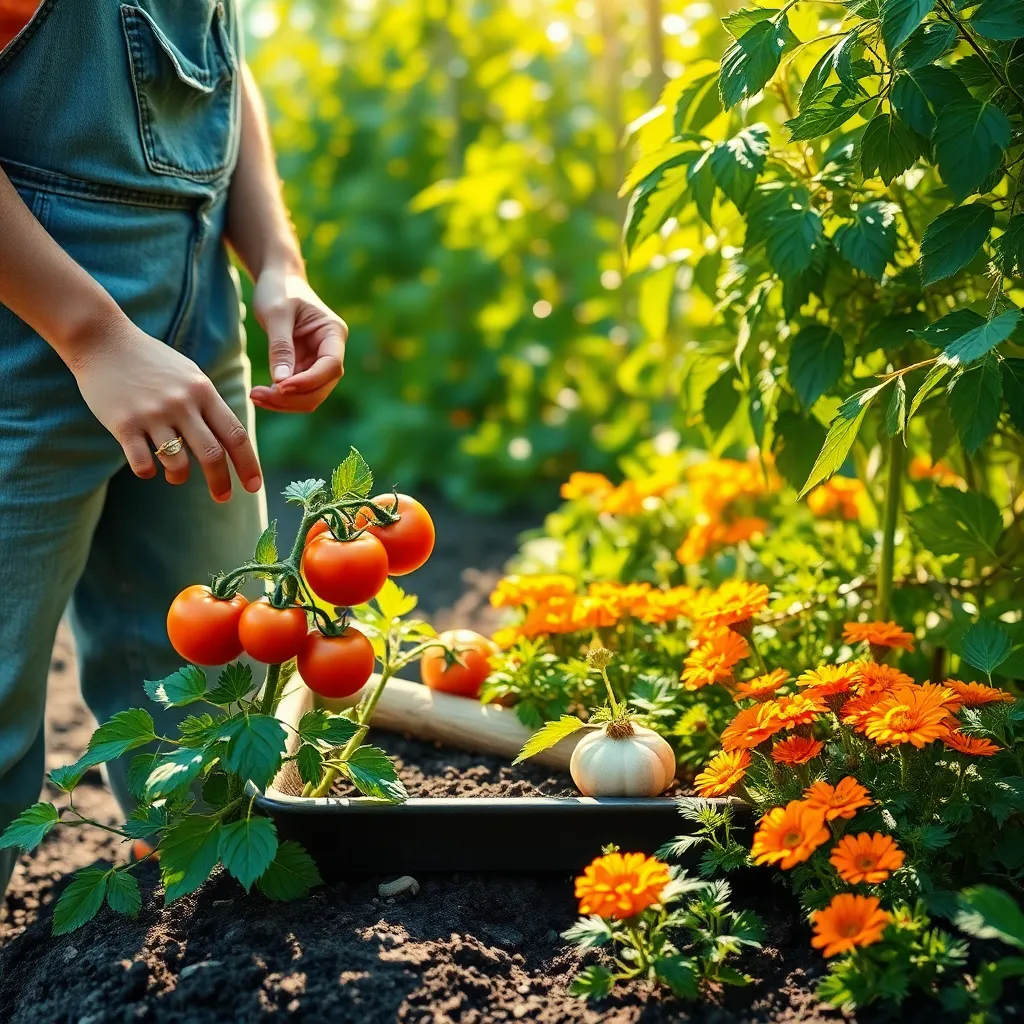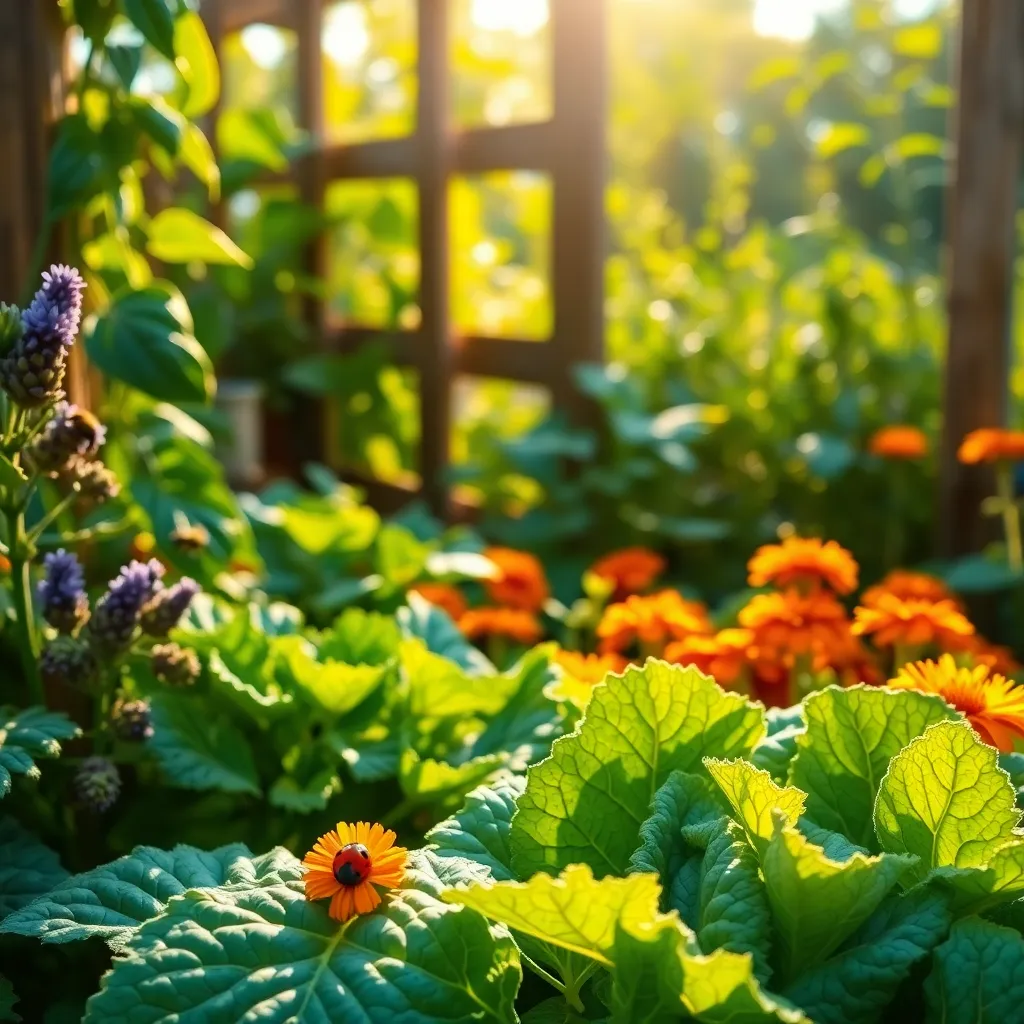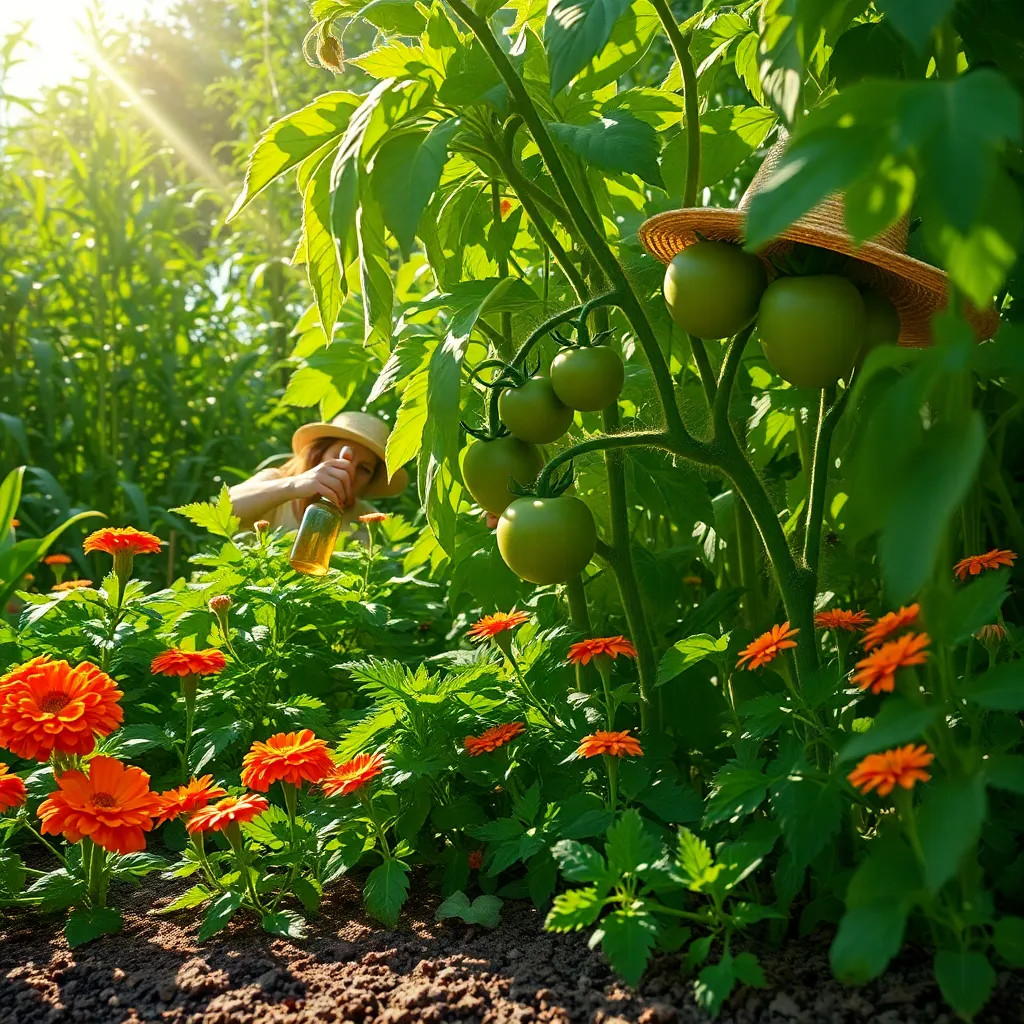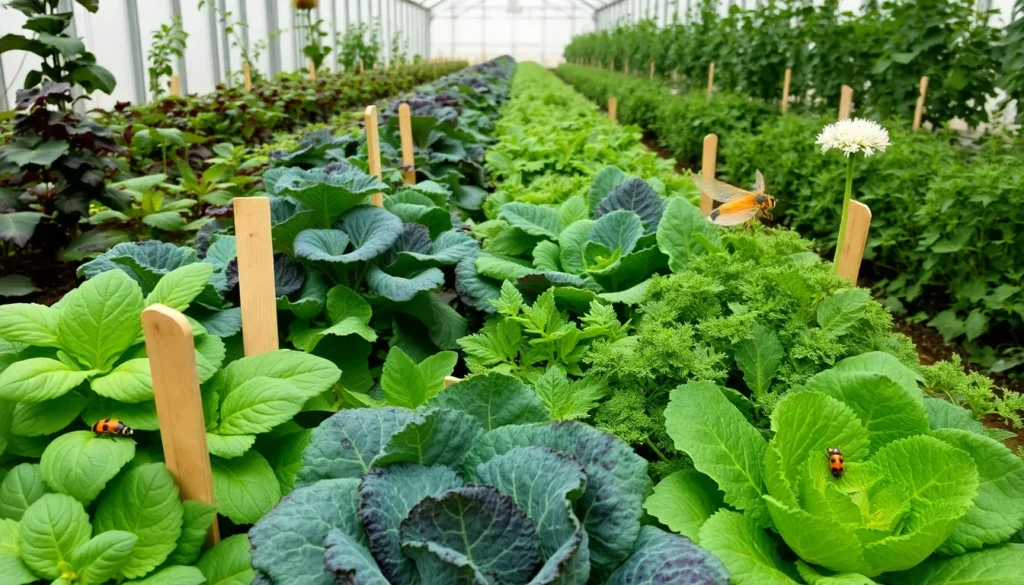In the bustling world of organic gardening, the quest for a healthy, flourishing garden often feels like a dance with nature itself. For both the greenest of thumbs and seasoned horticulturists, mastering the art of pest control is an essential chapter in the story of every successful garden. It’s not merely about keeping unwelcome visitors at bay; it’s about nurturing a harmonious environment where plants can thrive without the shadow of harmful chemicals.
Imagine your garden as a vibrant ecosystem, where every element plays a crucial role in its ongoing symphony. This article will guide you through the intricate balance of pest management, offering insights into natural deterrents, beneficial insects, and sustainable strategies that align with your organic principles. Whether you’re just beginning your gardening journey or looking to refine your methods, you’ll discover practical, eco-friendly solutions that empower you to take control with confidence.
As we dive into this topic, you’ll learn how to identify common garden pests and understand their impact on your beloved plants. We’ll explore various organic techniques, from companion planting to homemade remedies, that will arm you with the knowledge to protect your garden naturally and effectively. By the end, you’ll not only feel equipped to tackle these challenges but also inspired by the potential of your organic garden to flourish in harmony with nature’s own rhythms.
Understanding Organic Pest Challenges

Organic gardening presents unique pest challenges due to the absence of synthetic chemicals. Understanding these challenges starts with recognizing that pests can range from insects to larger animals like deer or rabbits.
To effectively manage these pests, it’s important to focus on creating a balanced ecosystem. This can be achieved by encouraging beneficial insects like ladybugs and lacewings, which naturally control pest populations.
Consider using companion planting as a practical strategy to deter pests. For example, planting marigolds near tomatoes can help repel nematodes, while basil can deter flies and mosquitoes.
For more advanced gardeners, integrating crop rotation into your gardening routine can reduce pest buildup. Rotating crops disrupts pest life cycles, making it harder for them to establish themselves year after year.
Maintaining healthy soil is crucial, as it can directly affect plant resilience to pests. Amend your soil with organic matter like compost to improve its structure and nutrient content, which in turn supports robust plant growth.
Watering practices also play a significant role in pest management. Avoid overwatering, as this can lead to weak plants susceptible to pests; instead, water deeply and less frequently to encourage strong root systems.
Regular monitoring of your garden is essential to catch pest issues early. Inspect plants weekly, looking for signs of damage or the presence of insects, and take action immediately to prevent infestations from spreading.
Natural Predators and Beneficial Insects

In organic gardens, utilizing natural predators and beneficial insects is an effective way to manage pest populations. These allies help maintain a balanced ecosystem, reducing the need for chemical interventions.
Ladybugs are excellent at controlling aphid populations, which are common pests in many gardens. To attract ladybugs, plant a variety of flowering plants like dill, fennel, and marigold that provide both food and habitat.
Another beneficial insect is the parasitic wasp, which targets caterpillars and other soft-bodied pests. Ensure your garden has plenty of nectar-rich flowers like yarrow and cosmos to support these wasps throughout their life cycle.
Ground beetles are also valuable allies, preying on slugs, snails, and cutworms that can damage young seedlings. To encourage ground beetles, create habitats with stones or logs and minimize soil disturbance to avoid disrupting their homes.
For advanced gardeners, consider introducing predatory mites to control spider mite infestations. Maintain a humid environment by regularly misting plants, as these beneficial mites thrive in such conditions.
Integrating a diversity of plants can significantly boost the presence of beneficial insects, leading to more robust pest control. By fostering a garden rich in biodiversity, you’re not only promoting plant health but also ensuring a sustainable and thriving ecosystem.
Creating a Balanced Ecosystem

To create a balanced ecosystem in your garden, start by diversifying your plant selection. **Incorporating a wide range of plant species** not only enriches the soil but also attracts a variety of beneficial insects that help keep pest populations in check.
Consider planting a mix of annuals and perennials to maintain biodiversity throughout the year. **Annuals like marigolds and nasturtiums** can deter pests with their strong scents, while perennials provide consistent habitat and food sources for helpful predators.
**Companion planting** is another effective strategy to promote a balanced ecosystem. By planting certain plants together, such as tomatoes with basil, you can naturally repel pests and improve plant health.
Providing varied **habitats and shelter** is crucial to supporting beneficial insects and birds. Install birdhouses and leave some areas of your garden untidy to create nooks for insects and small animals.
**Healthy soil** is the foundation of a balanced garden ecosystem. Regularly amend your soil with organic matter like compost or well-rotted manure to improve its structure and fertility.
To maintain optimal soil health, practice **crop rotation** and avoid planting the same type of plant in the same spot each year. This simple technique prevents soil nutrient depletion and reduces the risk of disease buildup.
**Water wisely** to support your garden’s ecosystem. Use drip irrigation or soaker hoses to minimize water waste and prevent overwatering, which can lead to pest and disease problems.
Finally, monitor your garden regularly and adapt as needed. By observing the interactions within your garden, you can make informed decisions to continually foster a thriving and balanced ecosystem.
Organic Pest Control Techniques

Organic pest control methods focus on maintaining a healthy balance in your garden by using natural solutions. One effective technique is introducing beneficial insects, like ladybugs and lacewings, which can help control aphid populations naturally.
Companion planting is another strategic method to deter pests while promoting plant growth. For example, planting marigolds alongside tomatoes can help repel nematodes, while basil planted near peppers can discourage aphids and spider mites.
Creating homemade sprays from common kitchen ingredients can also provide a safe pest control alternative. A mixture of water, garlic, and dish soap can be sprayed on plants to deter soft-bodied insects, offering an environmentally friendly solution.
Regular monitoring and hand-picking of pests are essential practices for maintaining an organic garden. Inspect your plants frequently for signs of damage, and remove any pests by hand to prevent infestations from escalating.
Encouraging a diverse ecosystem in your garden can naturally keep pest populations in check. By planting a variety of native plants, you attract a range of beneficial insects and birds that help maintain this balance.
Monitoring and Maintenance Strategies

Consistent monitoring is crucial for effective pest management in organic gardens. Inspect your plants regularly, ideally every few days, to catch pest issues early before they become severe.
Use a notebook or a digital app to keep track of pest activity and plant health. This record-keeping helps identify patterns and repeated problems, allowing you to adjust your strategies accordingly.
Setting up physical barriers can be a highly effective maintenance strategy. Floating row covers and netting protect plants from a variety of pests while still allowing light and water to reach them.
Encourage beneficial insects, like ladybugs and lacewings, by planting companion plants such as dill, fennel, and cilantro. These plants provide nectar and pollen, creating a thriving environment for natural pest predators.
Watering practices can also impact pest populations. Watering plants early in the morning ensures leaves dry quickly, reducing fungal issues and deterring pests that thrive in moist conditions.
For more advanced gardeners, consider employing crop rotation and companion planting to naturally deter pests. These practices disturb pest life cycles and enhance soil health, supporting the long-term vitality of your garden.
Conclusion: Growing Success with These Plants
In the journey of nurturing both gardens and relationships, understanding and applying key concepts is essential. First, recognizing the importance of clear communication helps in identifying and addressing issues before they escalate. Second, setting healthy boundaries ensures mutual respect and personal growth. Third, practicing active listening fosters empathy and deeper connections. Fourth, regular check-ins nurture ongoing trust and transparency. Lastly, embracing flexibility allows for adaptation and resilience in the face of challenges.
As an actionable next step, take a moment today to initiate a conversation with your partner about any small “pests” that may be nibbling away at your relationship, and discuss ways to address them together.
Remember, relationships, like organic gardens, thrive with consistent care and attention. Bookmark this article as a handy guide to revisit these principles whenever you need a refresher.
By applying these insights, you are investing in a flourishing, resilient relationship that stands the test of time. As you continue to grow together, let these tools empower you to cultivate a partnership rich in understanding and happiness. Here’s to the success of your relationship now and in the future!







